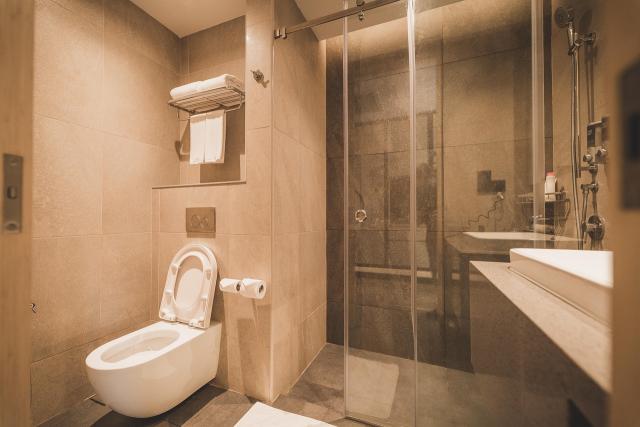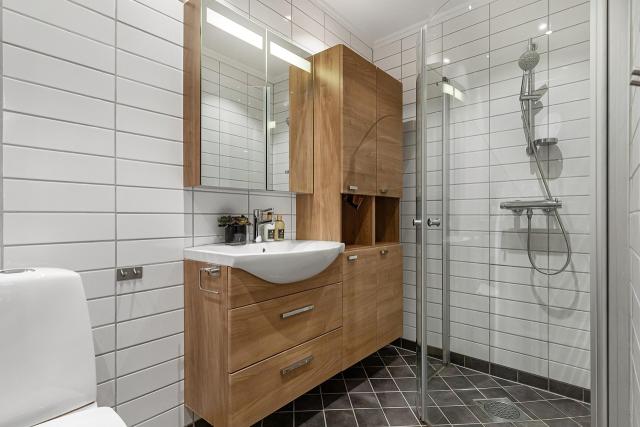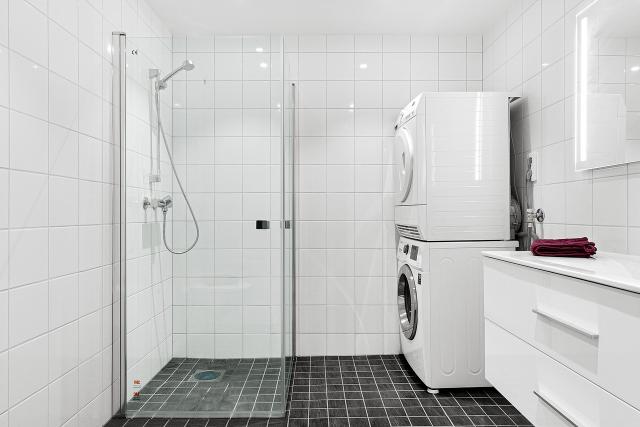
How to Waterproof a Bathroom: A Step-by-Step Guide for Am...
Bathrooms aren’t just practical spaces for daily routines—they’re where we unwind after a long da...

Installing a shower drain (also called a shower trap) is a crucial part of building or renovating a walk-in shower. Done incorrectly, it can lead to standing water, persistent odors, mold, and water damage. But with the right preparation, materials, and technique, you can ensure your shower drains smoothly and stays watertight.
This detailed guide will walk you through each step of the shower drain installation process, explain key components, and help you avoid common mistakes—whether you're working in a modern apartment or a single-family home in the USA.
Let’s begin by looking at how a standard shower drain is constructed, using the popular BERGES ZENTRUM Uno model as a reference. The design may vary slightly depending on the brand, but the core components remain similar.
The main body of the trap is designed to collect and redirect wastewater into your plumbing. The outlet connection can be:
Vertical – connects from the bottom and is typical for second-floor bathrooms or over crawlspaces.
Horizontal – connects from the side and is often used in single-story homes or apartments.
This component allows minor height adjustments during installation, helping compensate for uneven surfaces or differences in floor levels.
This connects the drain to the top grate and ensures a leakproof seal.
This is what blocks unpleasant sewer odors from rising into your bathroom. It comes in three types:
Wet trap – Uses a water seal (water sitting in the bend) to block gases. It can dry out if not used for a long time.
Dry trap – Uses a mechanical valve. Great for infrequently used showers.
Combination trap – Uses both a water seal and a membrane. More versatile, but may clog faster.
The grate keeps large debris like hair or soap scum from entering the plumbing. It comes in various designs and finishes to match your shower style.
Linear drain: Long and narrow, installed along a wall or entry to the shower. Lengths range from 12" to 48". Best for modern bathrooms with clean lines.
Point drain: A smaller square drain placed in the center of the shower floor. Best for compact or traditionally designed bathrooms.
This is a temporary cover used during construction to prevent debris from falling into the system before final installation.
Before starting your project, gather all the necessary tools and supplies. This will save time and help the installation go smoothly.
Spirit level
Measuring tape
Pencil or marker
Tile cutter or wet saw
Power drill
Mixing paddle for drill
Bucket for mixing cement
Hammer drill (if you need to remove tile)
Mortar or self-leveling compound
Waterproofing membrane or sealant
Primer for waterproofing
Tile adhesive
Plastic or PVC drainpipes
Waterproof tape or caulking
Shower drain system (trap + grate)
Here’s how to install a shower drain from start to finish, optimized for American residential bathrooms:
If you're remodeling, first remove any existing flooring down to the subfloor. Clean the area thoroughly and inspect it for mold or water damage.
Apply a waterproofing sealant (such as RedGard or Schluter Kerdi) across the entire shower area. Pay special attention to where the walls meet the floor—these junctions are prone to leakage.
Connect the drain base to your main plumbing pipe. Depending on your setup, you’ll either glue or screw it in place.
Attach the temporary installation cap to the top to protect the trap during the rest of the work.
If you’re installing along a wall, bend the flange 90 degrees toward the wall and fasten it securely with screws.
Follow the manufacturer’s water-to-mix ratio. Most premixed floor leveling compounds will list exact proportions. Use a mixing paddle to ensure a smooth, lump-free blend.
Start with a flat layer to level out the base. Then apply a second layer with a 1–2% slope toward the drain. That’s about a ¼ inch drop per foot.
For example, in a 3-foot-wide shower, the edge of the floor should be about ¾ inch higher than the drain. This slope prevents pooling and ensures proper water drainage.
Once the mortar has cured (usually 24–48 hours), apply a layer of primer, followed by two coats of liquid waterproof membrane. Let each coat dry fully before proceeding.
You can use products like:
Schluter Kerdi waterproofing kit
RedGard Waterproofing and Crack Prevention Membrane
Mapei AquaDefense
Apply tile adhesive and begin tiling around the trap. Use a level frequently to ensure that the slope toward the drain remains intact.
Leave enough space around the trap opening so that the grate can be installed flush with the tile.
Remove the temporary cap. Measure the distance from the trap to the surface of the tile.
Cut the drain neck accordingly (if needed), and insert it into the trap.
Make sure it is tightly fitted and doesn’t rock or sit unevenly.
Finally, install your chosen water trap (wet, dry, or combo), then set the decorative grate in place.
Check that the grate is level with the tile and secure. You can usually snap it into place or fasten it with screws, depending on your system.
And that’s it—your shower drain is ready to use! Turn on the water and observe how it flows into the trap. If everything was installed correctly, you should see a steady flow, no puddling, and no odor.
Correct installation of a shower drain ensures long-lasting comfort, hygiene, and protection for your bathroom. Whether you're doing a full remodel or a simple update, taking the time to do it right will save you thousands in potential water damage repairs.

How to Waterproof a Bathroom: A Step-by-Step Guide for Am...
Bathrooms aren’t just practical spaces for daily routines—they’re where we unwind after a long da...

Modern walk-in showers are increasingly built without bulky trays or bases. Instead, they use a s...

Thanks for joining our homeowners’ community.
Stay tuned!
Choose the category
Choose the category